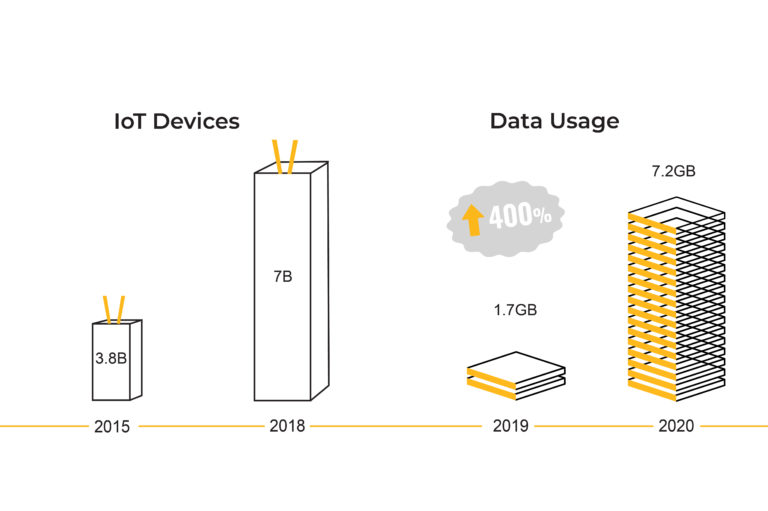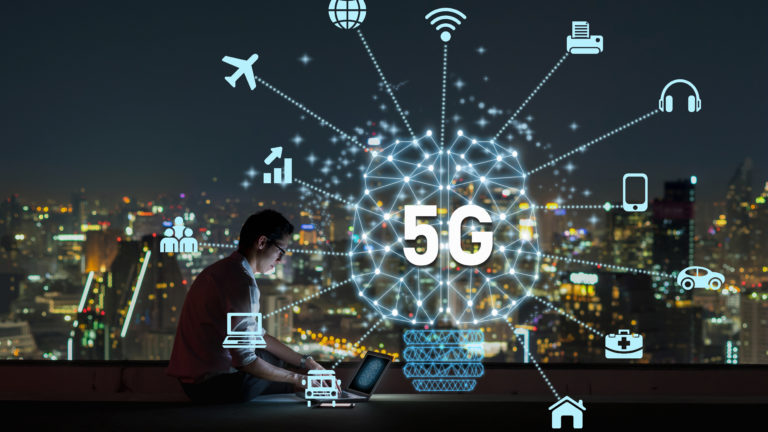The relationship between the 5G internet connections & IoT
Explosive Growth in Device Usage
Global reliance on mobile internet connection and mobile data usage have both drastically increased in the past decade. GSMA Intelligence recorded mobile user growth from 2.36 billion in 2014, to 3.54 billion in 2018; an increase of 1.18 billion in just 4 years. This number will continue to drastically increase as mobile internet and mobile devices become more and more accessible over time.
Data Usage Skyrockets

Even before the COVID-19 outbreak, data usage has already been growing in a strong uptrend. With COVID-19 lockdowns and travel restrictions in place in many countries, large numbers of people are forced to stay home. This led to an explosive growth in the use of data-intensive applications, such as work from home with video conference and cloud software and digital entertainment with video streaming services and video games. The result is an unprecedented 400% jump in the data consumed by an average user, from just 1.7GB per month in 2019 to 7.2GB per month in 2020. Going forward, data usage will likely continue to increase and will place enormous pressure on fixed and wireless networks alike.
Demand for IoT
Adding to the strain, IoT devices, not just smartwatches, but also wireless modems, routers, and machines, are constantly being connected to the Internet. In 2015, there were 3.8 billion connected IoT devices worldwide. In just 3 years in 2018, that number has increased to 7 billion. With industrial machinery and automotive on the edge of digitalization, this number is only expected to continue rising.
Under the pressure of the increasing number of computer networking users, data usage, and the number of connected devices, mobile networks have struggled to keep up. It isn’t that uncommon now to experience slower internet connections or even disconnects during peak hours or large events.
5G Internet Connections

Thankfully, 5G network and services are starting to be offered by many mobile operators. 5G network has the ability to scale from high-frequency mmWaves to provide much faster transmission bandwidth and lower latency than 4G, to sub-6GHz frequency range for better reliability and transmission range at a remarkable increase in performance compared to 4G.
As mentioned in our previous post, 5G brings down mobile network latency to single-digit or even sub-1ms territory, comparable or even better than fiber networks. This is achieved by using edge computing and by shortening the radio transmission’s transport block.
5G also supports over 500 times the connection density compared to 4G in a given area without congesting the mobile network. This will support the dramatic growth of the number of mobile devices, sensors, and IoT devices. It will also make the network much more resilient to network congestion.
Of course, 5G is also able to deliver much higher bandwidth to mobile devices compared to 4G.
These benefits together will not only help mobile networks deal with the insatiable growth of data bandwidth usage by consumers, but will open up new possibilities in many business and industrial fields. These include automotive, agriculture, medical, education, industrial automation, and so on.
The problem with the high-frequency waves in 5G networks is that they have short ranges and are susceptible to being blocked by walls and even trees. In our next post, we will discuss some of the technologies that 5G uses to get around these limitations.
Have you got the big picture of the 5G internet connections & IoT? Click the button below to learn more about our 5G products!